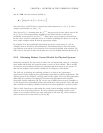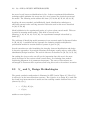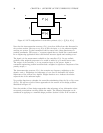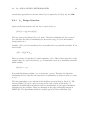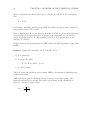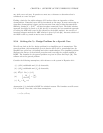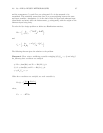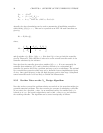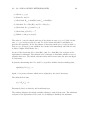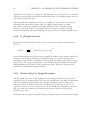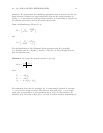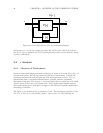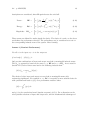36 CHAPTER 2. OVERVIEW OF THE UNDERLYING THEORY
any with a zero real part. In practice we must use a tolerance to determine what is
considered as a zero real part.
Finding a basis for the stable subspace of H involves either an eigenvalue or Schur
decomposition. Numerical errors will be introduced at this stage. In most cases using an
eigenvalue decomposition is faster and less accurate than using a Schur decomposition.
Similarly, forming X = X
2
X
−1
1
will also introduce numerical errors. The Schur solution
approach, developed by Laub et al. [63, 64, 65], is currently the best numerical approach
to solving the ARE and is used in the software as the default method. An overview of
invariant subspace methods for ARE solution is given by Laub [66]. Accurate solution of
the ARE is still very much an active area of research.
2.3.4 Solving the H
∞
Design Problem for a Special Case
We will now look at the H
∞
design problem for a simplifying set of assumptions. The
general problem (with assumptions given in Section 2.3.2) can be transformed into the
simplified one given here via scalings and other transformations. The simplified problem
illustrates the nature of the solution procedure and is actually the problem studied in
DGKF. The formulae for the general problem are given in Glover and Doyle [59]. The
software solves the general problem.
Consider the following assumptions, with reference to the system in Equation 2.11:
(i)(A,B
1
) stabilizable and (C
1
,A) detectable;
(ii)(A,B
2
) stabilizable and (C
2
,A) detectable;
(iii) D
T
12
[ C
1
D
12
]=[0I];
(iv)
B
1
D
21
D
T
21
=
0
I
;
(v) D
11
= D
22
=0.
Assumption (i) is included in DGKF for technical reasons. The formulae are still correct
if it is violated. Note that, with these assumptions,
e = C
1
x + D
12
u,



